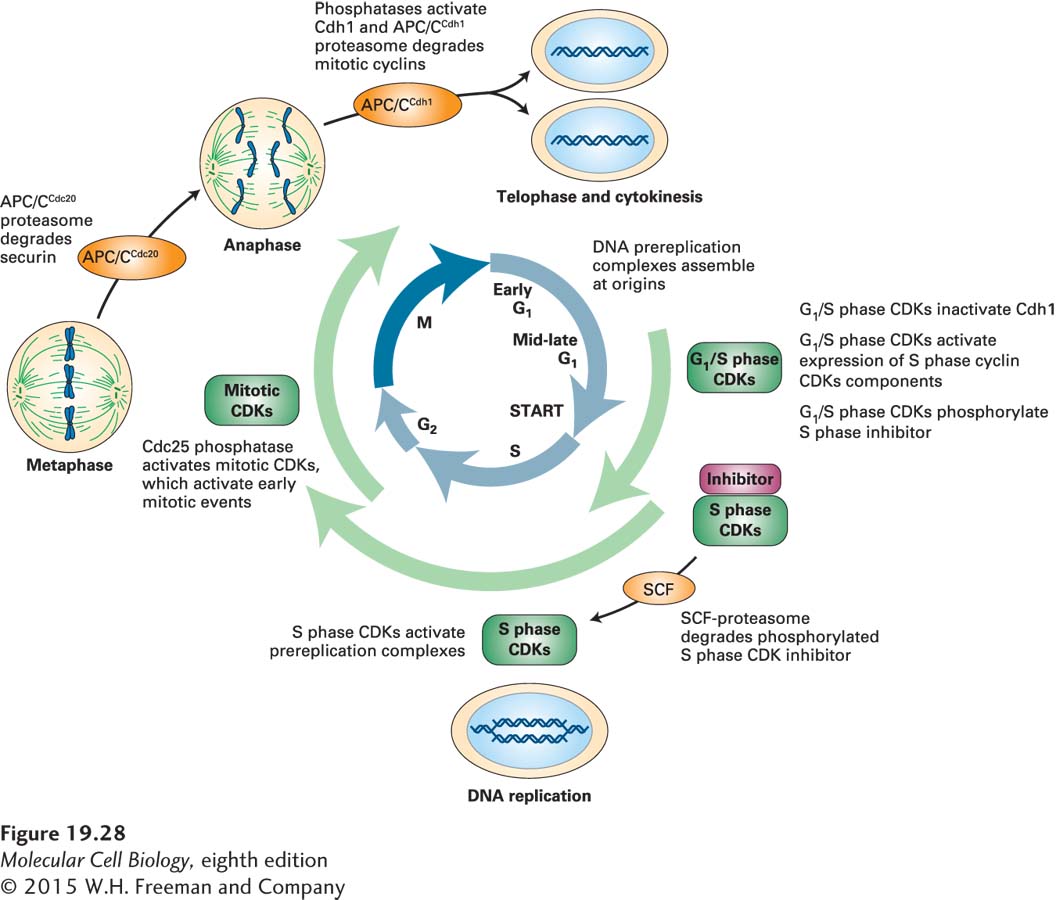Cytokinesis Creates Two Daughter Cells
When chromosome segregation is completed, the cytoplasm and organelles are distributed between the two future daughter cells. This process is called cytokinesis. With the exception of higher plants, the division of the cell is brought about by a contractile ring made of actin and the actin motor myosin (see Figure 17-35). During cytokinesis, the ring contracts in a manner similar to muscle contraction, pulling the membrane inward and eventually closing the connection between the two daughter cells.
Cytokinesis must be coordinated with other cell cycle events in space and time. For cell division to produce two daughter cells each containing the components necessary for survival, the division plane must be placed so that each cell receives approximately half of the parent cell’s cytoplasmic content and exactly half of the genetic content. Cytokinesis must also be coordinated with the completion of mitosis. In what follows, we explore both these aspects of cytokinesis regulation.
In animal cells, the contractile ring forms during anaphase and is placed in the middle of the anaphase spindle. This placement ensures that each daughter cell receives half of the genetic material. Despite the importance of this coordination, surprisingly little is known about it. Some experiments support the idea that signals sent from the spindle midzone, the area of the anaphase spindle between the segregated DNA masses, to the cell cortex are important for coordinating the site of cytokinesis with spindle position. Other research suggests that microtubules of the spindle interact with the cell cortex, positioning the cleavage furrow with respect to spindle pole position. Most likely, a combination of these pathways governs the formation of the cleavage furrow during cytokinesis.
As we will see in Section 19.7, cells have developed surveillance mechanisms that ensure that the site of cytokinesis is coordinated with spindle position. This is especially important during asymmetric cell divisions, which give rise to cells with different sizes or fates. Such cell divisions are essential during development and in stem cell divisions (see Chapter 21). Cytokinesis must also be coordinated with other cell cycle events. The major signal for cytokinesis is the inactivation of mitotic CDKs. Cells expressing a stabilized version of mitotic cyclins progress through anaphase but do not undergo cytokinesis. The CDK targets in the cytokinesis machinery have not yet been discovered.
This concludes our discussion of the molecular events of cell division. As we have seen, cyclin-
Page 904
